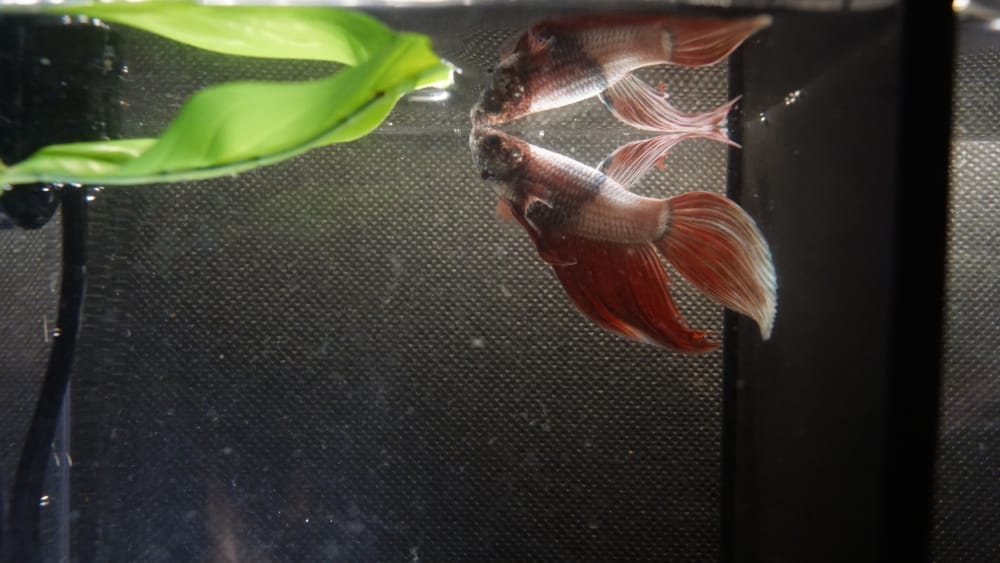This post was created with help from AI tools and carefully reviewed by a human (Muntaseer Rahman) . For more on how we use AI on this site, check out our Editorial Policy.
Check Out These FREE Tools We Made JUST For You!
Silk vs Plastic Plants for Bettas: Which Is Safer?

Look, I’m just going to say it: if you’ve got a betta with those gorgeous flowing fins and you’re shoving hard plastic plants in their tank, you’re basically putting razor blades in a pillow fort.
Harsh? Maybe. But I’ve seen too many sad bettas with shredded fins swimming around tanks that look like underwater torture chambers.
Let me help you figure out which fake plants won’t turn your fish into a tattered mess.
The Brutal Truth About Plastic Plants
Here’s what nobody tells you at the pet store.
Most plastic plants have hard, sharp edges that can easily tear a betta’s delicate fins. And I mean easily. Fish owners report finding tears and small holes in their bettas’ fins within days of adding plastic plants.
One person literally watched their tetra lose an eye because of a plastic plant. An eye!
The thing is, bettas are actually pretty shy fish despite their “fighter fish” reputation. They love hiding in plants, which means they’re constantly brushing against them. Every time those fins touch a sharp edge, it’s like dragging silk across broken glass.
Why Silk Plants Are the Clear Winner
Silk plants are like the difference between sleeping on Egyptian cotton versus sandpaper.
Silk plants are flexible and soft, moving gently in the water without scratching or harming your betta’s fins. They actually flow with the current, which looks way more natural and gives your fish something interesting to explore.
Plus, you don’t need fancy lighting, plant food, or CO₂ setups like you would with live plants. No trimming, no rotting roots, no algae taking over like some kind of aquatic apocalypse.
You just put them in and forget about them.
The Pantyhose Test (Yes, Really)
This is going to sound weird, but it works.
Grab a pair of pantyhose or nylon stockings and gently rub any plant along the surface. If the plant causes the pantyhose to snag, tear, or catch, it has sharp edges that will damage your betta’s fins.
If it rips pantyhose, it’ll rip fins. Simple as that.
About 99% of plastic plants will fail this test. That’s not me being dramatic—that’s what actual betta keepers report.
Some silk plants can even fail this test if they have exposed wires or rough edges, so always check before buying.
The Fine Print on Silk Plants
Okay, silk plants aren’t perfect.
Some silk plants start to fray after about 6 months. The threads come loose, fish try to eat them (because fish are weirdly curious like that), and suddenly you’re playing aquatic surgeon trying to remove threads from your filter intake.
Algae can get stuck in the silk weave and it’s really hard to remove. You can’t just scrub them down like plastic—you need to be gentle or they’ll fall apart.
Some silk plants have metal wire supports inside, and if those get exposed to water, they’ll rust. Rust and fish tanks? Bad combination. Really bad.
When Plastic Might Actually Work
I know I just spent half this article trashing plastic plants, but hear me out.
Soft plastic plants without sharp edges can work fine if you choose carefully. They’re more durable than silk, easier to clean (just wipe them down), and don’t fray.
If you’ve got other fish like cichlids who like to destroy things, plastic holds up better than silk.
But—and this is important—you should never use hard plastic plants with long-finned fish like bettas or telescope eye goldfish. Their delicate features make them way too vulnerable.
What Real Betta Owners Are Saying
The internet is full of people who learned this lesson the hard way.
“Twice now my betta has wiggled himself into a tight space while exploring and cut his fin on a plastic plant,” one owner wrote. After switching to silk, they never had the problem again.
Another person noticed their betta’s fins getting longer and more beautiful—until they started snagging on the plastic plants. Even after doing the pantyhose test beforehand, the fins still got caught.
Many experienced betta keepers use only silk plants specifically because plastic can rip and tear fins.
The Maintenance Reality Check
Let’s talk about keeping these things clean.
Plastic plants: Wipe them down during water changes, or if algae takes over, you can bleach them in a separate container (2 tablespoons bleach per gallon of water, soak for a few minutes, rinse thoroughly).
Silk plants: Rinse in hot water during tank cleanings. Before adding any new silk plant, always rinse it in hot water to remove bacteria, dust, and debris. Some people use hydrogen peroxide to remove stubborn algae from silk.
Both fake plants can collect fish waste and debris, so neither is truly “maintenance-free.”
Quick Comparison Table
| Feature | Silk Plants | Plastic Plants |
|---|---|---|
| Fin Safety | Soft and gentle | Often sharp and dangerous |
| Durability | Can fray after 6 months | Very durable |
| Cleaning | Gentle rinsing needed | Easy wipe-down |
| Natural Look | Moves naturally in water | Stiff and obviously fake |
| Price | More expensive | Usually cheaper |
| Algae Issues | Hard to remove from weave | Easy to scrub clean |
| Best For | Bettas, long-finned fish | Aggressive fish, community tanks |
Things to Watch Out For
Avoid silk plants with metal wire supports—if the fabric tears even slightly, the wire rusts and poisons your tank.
If buying silk plants from craft stores, make sure they’re not scented and that dyes won’t bleed into the water.
Only use plastic plants specifically made for aquarium use—never random plastic decorations.
If your filter intake is too strong, even soft plants won’t matter because the current will pin your betta’s fins against the grate. Get a pre-filter sponge.
The Bottom Line
If you have a betta, silk plants are safer.
Period.
Unless you’re willing to carefully select soft plastic plants and do the pantyhose test on literally everything, silk is your best bet for keeping those fancy fins intact.
Your betta didn’t evolve those gorgeous flowing fins just so you could shred them with cheap plastic decorations. Small rips might not seem like a big deal, but they can lead to infections and stress for your fish.
Look, I get it—silk plants cost more and they wear out eventually. But emergency fin rot treatment costs more than silk plants, and watching your fish suffer because you went with the $3 plastic plant instead of the $8 silk one is going to haunt you.
Do the pantyhose test. Choose silk when possible. And if you absolutely must use plastic, make sure it’s aquarium-safe and softer than your fish’s fins.
Your betta will thank you by not looking like they went through a paper shredder.
About Author
Hello, I’m Muntaseer Rahman, the owner of AcuarioPets.com. I’m passionate about aquarium pets like shrimps, snails, crabs, and crayfish. I’ve created this website to share my expertise and help you provide better care for these amazing pets.
Disclaimer
This site is owned and operated by Muntaseer Rahman. AcuarioPets.com is a participant in the Amazon Services LLC Associates Program, an affiliate advertising program designed to provide a means for sites to earn advertising fees by advertising and linking to Amazon.com. This site also participates in other affiliate programs and is compensated for referring traffic and business to these companies.

